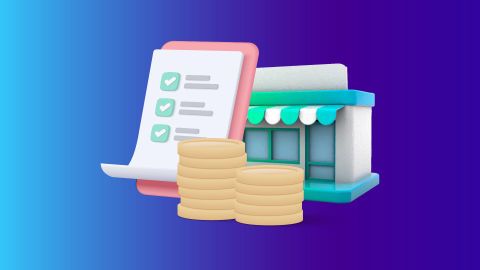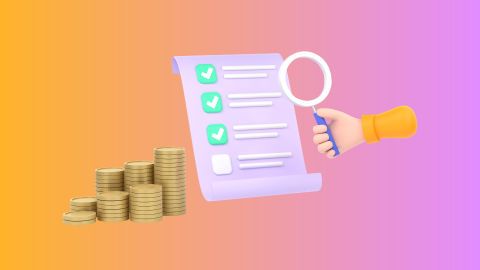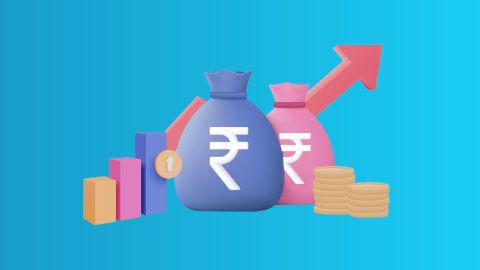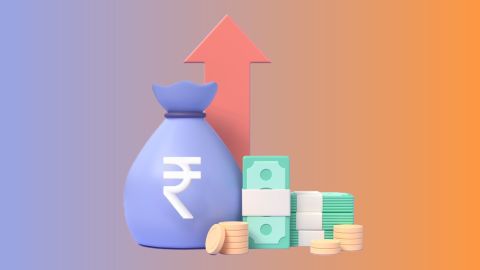How does dropshipping work?
Dropshipping allows business owners to concentrate on building their brand and managing customer relationships. It offers convenience and flexibility. Here’s how e-commerce dropshipping works:
Order Processing
When a customer orders a handbag online, you, as the dropshipper, notify the fashion brand. The brand then picks the handbag from its stock and prepares it to be sent directly to the customer.
Supplier’s Role
After receiving your notification, the fashion brand handles shipping the handbag straight to the customer. They make sure it is well-packaged and delivered on time.
Business Management
As the dropshipper, your main focus is on marketing and customer support. The fashion brand takes care of stock and delivery, making the whole process smooth and efficient.
How to start a dropshipping business in India in 2025?
Starting a dropshipping business in India involves a strategic approach. Entrepreneurs must choose a profitable niche, partner with reliable suppliers, create an attractive online store, and market their products effectively. Additionally, registering the business legally ensures smooth operations. Availing financial assistance such as an MSME loan can also support early-stage capital needs. Let us explore each step to start your own business on dropshipping.
1. Choose a dropshipping business niche:
Choosing the right business niche is critical to your dropshipping success. A niche helps you focus on a specific customer base and product range, making your business more appealing to a target audience.
- Identify a niche with high demand but low competition.
- Research trending products that offer potential for profit.
- Focus on products with easy shipping and handling requirements.
- Consider a niche that you are passionate about for sustained interest.
2. Find dropshipping suppliers:
Working with reliable suppliers ensures timely delivery and product quality, which are crucial for maintaining customer satisfaction.
- Research potential suppliers and review their reliability.
- Opt for suppliers who offer competitive pricing and fast shipping.
- Build long-term relationships with trusted suppliers for consistency.
- Use online supplier directories like AliExpress or IndiaMart.
3. Build your business brand identity:
Creating a strong business brand identity sets your store apart and helps in gaining customer loyalty. A well-defined brand will resonate with your audience.
- Develop a unique brand name and logo that represent your niche.
- Craft a compelling brand story to connect with your customers emotionally.
- Maintain consistency in your brand’s tone, colours, and messaging.
- Focus on customer trust by highlighting quality and value.
4. Create your online store:
An efficient and user-friendly online store is key to a smooth customer experience. Choose an e-commerce platform that fits your needs.
- Opt for platforms like Shopify, WooCommerce, or BigCommerce.
- Choose a design template that suits your brand’s identity.
- Ensure that your store is mobile-friendly for wider accessibility.
- Use high-quality images and detailed product descriptions.
5. Prepare the dropshipping business finances:
Managing your finances effectively is crucial to maintaining profitability. Planning your budget and keeping track of expenses will help you stay organised.
- Set up a business bank account to manage income and expenses.
- Use accounting software to track your cash flow.
- Calculate your margins to ensure that your business remains profitable.
- Monitor expenses like marketing, website maintenance, and transaction fees.
6. Register your dropshipping business as a legal structure:
Registering your dropshipping business legally protects your brand and gives it credibility. Choose the most suitable structure for your business.
7. Optimise and market your dropshipping business:
Effective marketing is essential for attracting customers to your store. Optimising your website for search engines and running paid ads will drive traffic.
- Use SEO strategies to rank your store higher in search results.
- Run targeted social media ads to attract relevant customers.
- Offer discounts or promotions to encourage first-time buyers.
- Use email marketing to build long-term customer relationships.
Types of Dropshipping Business Model
1. Product Reselling
This is the most common type of dropshipping. You list products from different suppliers on your website so customers can buy them all in one place.
Your main job is to promote the products well. Good marketing is key here.
For example, if you want to sell products for people working from home, you need to explain clearly what makes each product special and why someone should buy it.
2. Business Extensions
In this model, existing shops or retailers take their business online.
They work with dropshipping companies that handle shipping when an online order is placed.
A good relationship between the shop and the dropshipping partner is important for smooth delivery and service.
3. Product Creation
Here, you create a single product by combining several items into one kit or bundle.
For example, if you sell a DIY craft kit, it may include coloured papers, ribbons, pens, glue, tape, and other craft items—all packed together as one product.
Best Dropshipping Products in India in 2025
Category
|
Popular Products
|
Why They Sell Well
|
Electronics and gadgets
|
Smart home devices (plugs, LED lights, security systems), Wireless chargers, Portable projectors, Mobile accessories (cases, chargers, ring lights), Wireless earphones
|
Young, tech-savvy people want convenience and smart home solutions. Accessories often have high profit margins.
|
Baby products
|
Organic baby clothes, Ergonomic feeders, Bottle warmers, Baby monitors, Silicone teething toys, Baby carriers
|
With a growing population, baby products are always in demand. Parents look for safe, premium, and innovative items.
|
Eco-friendly products
|
Reusable silicone food bags, Bamboo toothbrushes, Solar chargers, Organic cotton tote bags, Reusable water bottles
|
More people want sustainable options and are willing to pay extra for eco-friendly products.
|
Personal care and beauty
|
Salicylic acid face wash, Hyaluronic sunscreen, Facial rollers, Herbal hair growth serums, Organic tea
|
The personal care market is growing fast, with strong demand for both regular and natural products. Many items are bought repeatedly.
|
Fitness and outdoor gear
|
Resistance bands, Yoga mats, Portable blenders, Smart gym equipment, Insulated water bottles
|
Health and wellness are a priority, creating demand for home workout and outdoor fitness gear.
|
Home decor and essentials
|
Storage organisers, Decorative lights, Wall art, Cushions, Kitchen gadgets, Portable fans
|
People spending more time at home want products that make their home comfortable, organised, and attractive.
|
Customised products
|
Personalised T-shirts and hoodies, Custom jewellery, Phone cases, Mugs, Notebooks
|
Custom or print-on-demand products sell well because people like unique, personalised items with higher profit margins.
|
Auto accessories
|
Portable car vacuums, Air fresheners, Phone mounts, Dash cams, Car cleaning gels
|
Millions of car and bike owners look for practical and stylish upgrades, keeping this market strong.
|
Dropshipping Mistakes to Avoid
Running a dropshipping store, like any business, comes with its own challenges. Avoid these common mistakes to help your business grow smoothly:
1. Ignoring Sales Data
Many new dropshippers make the mistake of not checking their sales reports regularly.
To earn more profit, you need to track and adjust your business based on data.
Check often:
Which products are selling and which are not
How much profit you're making from ads
Which items bring the highest profit
How your sales trends are changing
Where your customers come from and what devices they use
2. Skipping SEO (Search Engine Optimisation)
Your online visibility matters, whether customers find you through Google or social media.
If your website doesn’t show up in search results, your sales can drop.
Focus on:
Writing helpful and original content on product pages
Making sure your website loads quickly
Ensuring your website works well on mobiles
Tip: Shopify stores already have fast and mobile-friendly designs. Use free tools like Google Search Console to check how your site performs on Google and make improvements.
3. Not Planning for Growth
Think ahead. Build your business not just for today, but for future growth.
Avoid these limits:
Dropshipping lets you grow with fewer costs, but only if you’re prepared to handle more orders as your business grows.
4. Ignoring Unhappy Customers
Even if you don’t handle products directly, you are still responsible for customer service.
If you ignore customer complaints, you may get bad reviews or lose repeat buyers.
To improve customer experience:
Write clear and honest product descriptions
Share your contact details clearly
Answer all customer questions quickly
Handle returns and refunds smoothly—don’t wait for the supplie
Advantages and disadvantages of dropshipping business
Advantages
|
Disadvantages
|
Low startup costs: You don’t need to buy or store stock upfront, so starting the business requires less money.
|
High competition: It’s easy to start, so many others sell the same products, often leading to price wars and lower profits.
|
Wide product range: Without holding stock, you can sell many products from different suppliers and quickly update your catalogue.
|
Lower profit margins: Competition and supplier fees often mean smaller profits per sale compared with traditional retail.
|
No inventory management: Suppliers store, pack, and ship products, so you avoid logistical work.
|
Less control over quality: You can’t check products yourself, so any defects can hurt your reputation even if it’s the supplier’s fault.
|
Location flexibility: You can run your business from anywhere with an internet connection, no warehouse needed.
|
Complicated shipping: Customers ordering from different suppliers may get multiple packages at different times, causing confusion.
|
Easy to scale: More sales don’t mean much extra work, making growth simpler.
|
Dependence on suppliers: Your business relies on their stock, speed, and accuracy. Problems are your responsibility to fix.
|
Low risk: You don’t pay for stock upfront, so there’s little risk of losing money on unsold items.
|
Limited branding: Most suppliers use generic packaging, making it hard to create a unique brand or memorable unboxing experience.
|
Easy to test products: You can quickly try new items and see what sells before investing heavily.
|
Harder customer service: Acting as the middleman between customers and suppliers can make handling complaints tricky.
|
Dropshipping Profit Potential in India
Many Indian business owners have done well with dropshipping by focusing on specific product categories (niches) and giving great customer service. Even though there’s a lot of competition, dropshipping is still a smart and low-risk way to start an online business.
To succeed, focus on a niche that isn’t too crowded, choose trustworthy suppliers, and spend on good marketing.
Tips from successful dropshippers in India:
Build a Strong Brand:
Stand out from others by offering a great shopping experience and unique products.
Work with Local Suppliers:
Partnering with Indian suppliers can make delivery faster and keep customers happy.
How much money is needed to start dropshipping in India?
Starting a dropshipping store is much more affordable than setting up a traditional retail shop, but there are still a few basic costs to consider:
- Online store platform: You’ll need an e-commerce platform to build and run your store. Plans typically start from around Rs. 2,500 per month and can go up to Rs. 25,000 or more, depending on your business size. If you sell through Amazon, expect monthly fees of Rs. 3,500-Rs. 5,000, plus around 15% commission on each sale.
- Domain name: This is your business’s online identity. You can buy a custom domain for about Rs. 1,000-Rs. 1,500 per year. If you use a platform like Shopify or WooCommerce, you can link your domain directly to your store.
- Website and hosting: Most platforms offer built-in hosting and website builders. However, if you go for a standalone site, you may need to pay extra for web design, plug-ins, and third-party hosting. Hosting costs in India range from Rs. 4,000 to Rs. 80,000 per month, based on the traffic, features, and service levels.
- Payment processing fees: Every time a customer pays using a card or digital wallet, a fee applies. Services like PayPal, Razorpay, or Stripe typically charge around 2% to 3% per transaction. Card networks like Visa, Mastercard, or American Express may also levy similar charges.
While the total costs may seem high, many entrepreneurs start a dropshipping ecommerce business with just Rs. 40,000 to Rs. 80,000 as initial investment, and monthly running costs under Rs. 8,000. Compared to setting up a physical retail store, where rent alone can cross this amount, dropshipping is a low-risk, scalable model.
If you want to start big or need help with initial investment, consider applying for a secured business loan to access funds at competitive rates while keeping long-term costs under control.
Conclusion
Starting a dropshipping business offers an excellent opportunity to enter the e-commerce world with minimal risks. It allows you to operate with low overhead costs, flexibility, and access to a wide range of products. However, it is crucial to manage customer expectations, select reliable suppliers, and maintain healthy profit margins. Additionally, you may need a business loan to cover marketing, website development, and operational costs in the initial phase. Before borrowing, it’s important to understand the applicable business loan interest rate to make informed financial decisions. With careful planning and effective strategies, a drop shipping business can become a profitable venture.
Helpful resources and tips for business loan borrowers






